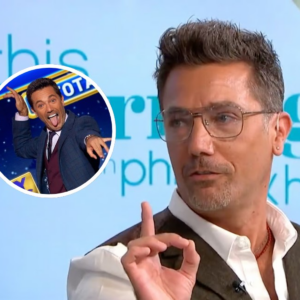
In a significant development for late-night television, “Jimmy Kimmel Live” has experienced a historic low in TV ratings following a recent episode featuring renowned actor Robert De Niro. This downturn in viewership marks a notable moment for the long-running talk show, signaling potential challenges ahead for its programming strategy.
The episode featuring Robert De Niro, a celebrated figure in the entertainment industry, was anticipated to draw a substantial audience. However, the reality proved starkly different, as the show received its lowest TV rating in history. This unexpected outcome has prompted speculation and analysis within both the entertainment industry and among television critics.
The decline in viewership for “Jimmy Kimmel Live” following the episode with Robert De Niro raises questions about the factors contributing to the show’s diminishing appeal. While late-night talk shows have historically served as platforms for celebrity interviews, comedy sketches, and topical commentary, this particular episode failed to resonate with audiences.
One possible explanation for the low TV rating could be attributed to shifting audience preferences and viewing habits. As streaming services and digital platforms continue to proliferate, traditional television viewership faces stiff competition for audience attention. Additionally, the episode’s content and presentation may have failed to captivate viewers, leading to a decline in engagement.
The inclusion of Robert De Niro, a highly respected actor with a storied career, should have theoretically boosted viewership for “Jimmy Kimmel Live.” However, the unexpected outcome suggests that other factors may have influenced audience turnout. It is essential for the show’s producers to conduct a thorough analysis of viewer feedback and preferences to identify areas for improvement.
The historic low TV rating for “Jimmy Kimmel Live” underscores the challenges facing late-night television in an increasingly fragmented media landscape. As audience demographics shift and viewing habits evolve, talk shows must adapt their programming strategies to remain relevant and engaging.
Moving forward, it will be crucial for “Jimmy Kimmel Live” to reassess its approach to content creation and audience engagement. By staying attuned to viewer preferences and embracing innovative storytelling techniques, the show can reclaim its position as a leading late-night destination.
In conclusion, the historic low TV rating for “Jimmy Kimmel Live” following an episode featuring Robert De Niro highlights the complexities of audience engagement in contemporary television. As the entertainment landscape continues to evolve, late-night talk shows must evolve alongside it, ensuring that they remain compelling and relevant in an ever-changing media environment.
News
Clarissa Molina aclaró el escándalo de su posible boda con un cantante
La modelo y actriz Clarissa Molina, quien participó en el reality de la cadena televisiva Univisión, Nuestra Belleza Latina 2015, acaparó todos los titulares de la prensa…
Clarissa Molina responde si tiene o no una relación seria con Don Omar
Clarissa Molina, la reconocida presentadora, ha salido al paso de los recientes rumores que la vinculaban sentimentalmente con el famoso cantante Don Omar. Estas especulaciones surgieron luego…
Golpe bajo para Clarissa Molina, su ex le restriega en la cara su nuevo romance.
Hace casi un año desde que la ruptura entre Vicente Saavedra y Clarissa Molina se hizo totalmente pública, desde ahí se rumoró sobre la nueva relación del…
Clarissa Molina alcanza importante logro en su carrera: «Sin ustedes nada de esto sería posible.
Clarissa Molina alcanza importante logro en su carrera: «Sin ustedes nada de esto sería posible» https://www.highcpmgate.com/p0ut9gg9xt?key=e9fc917fb094409cd5918642ea6fac69 Clarissa ha sido nominada recientemente en los prestigiosos Premios Soberano de…
El apuesto entrenador de Clarissa Molina que ha transformado el cuerpo de la conductora.
Su espectacular físico y su gracia en la pasarela, convirtieron a Clarissa Molina en la ganadora de Nuestra Belleza Latina 2016. Desde entonces han pasado muchas cosas…
El nuevo sueldazo que gana Clarissa Molina ahora que estrenó programa en Univisión.
Una de las conductoras más importantes de Univisión es Clarissa Molina, quien en los últimos años ha ganado mucha popularidad y la cadena le ha confiado la…
End of content
No more pages to load











